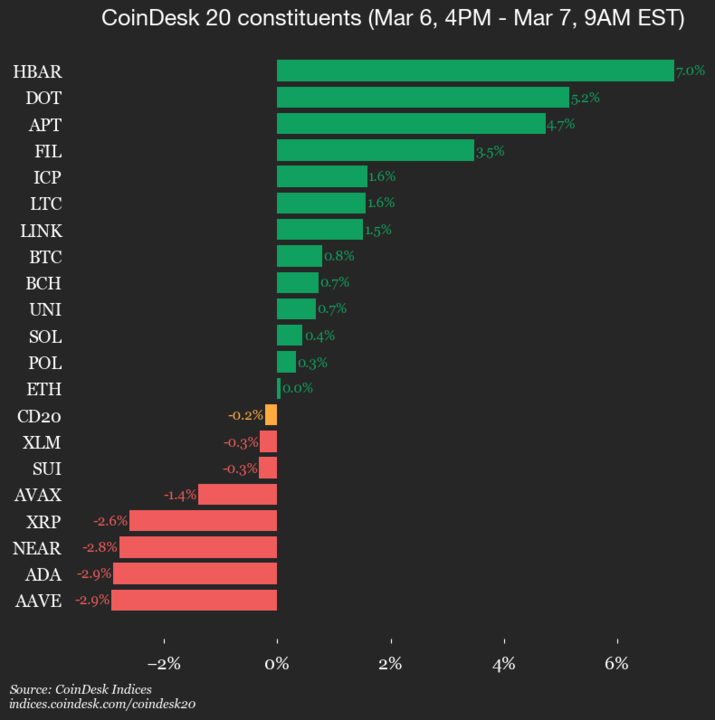MtnDAO’s coworking summits may come and go, but the impact of mtnCapital is set to last indefinitely.
The mtnCapital token ($MTN) is poised for launch at the conclusion of March during a monthlong gathering of Solana developers, as revealed exclusively by co-founders Barrett and Edgar Pavlovsky to CoinDesk. While the token’s launch is anticipated, it’s the underlying functionality of MTN that sparks curiosity.
Understanding MtnCapital: A Futuristic Investment Approach
MtnCapital is envisioned as an experimental on-chain investment fund operating under an innovative governance model known as futarchy. This concept, originally conceived by MetaDAO, has captured the attention of Solana enthusiasts since its introduction at mtnDAO’s winter meetup in 2024.
Futarchy proponents argue that this approach can revolutionize decision-making processes across various domains, from financial markets to governmental structures, by prioritizing market-driven insights over traditional voting mechanisms. MtnCapital seeks to test the viability of a market-governed investment fund, challenging conventional wisdom about risk and return.
How Decisions Will Be Made
The mechanics of mtnCapital are straightforward: decisions will hinge on the fluctuations of the MTN token. For instance, if market participants believe that a proposed investment—say, $100,000 in Bitcoin—will yield positive results for mtnCapital, they will drive the price of MTN higher, thereby approving the proposal. Conversely, if sentiment leans negative, the token’s value will decrease, leading to the proposal’s rejection.
This model moves away from the traditional “one person, one vote” approach. Instead, it empowers traders who hold significant positions and are adept at analyzing market data.
Barrett is confident, declaring, “I truly believe it will outperform VC funds.”
Futarchy in Fundraising
To build its treasury, mtnCapital will sell its entire allocation of MTN tokens to the public. What transpires with this treasury will be dictated solely by market forces. The founders emphasize that they will possess no more—or less—influence over mtnCapital than any other token holder once it launches. There will be no airdrops or founder allocations.
Barrett expressed enthusiasm about participating in the token sale, stating, “Heck yea I am, are you crazy?”
MtnCapital intends to leverage MetaDAO’s newly approved futarchy fundraising launchpad, which aims to empower traders’ predictions rather than relying on conventional voting.
A New Era of Governance
MtnCapital’s governance structure prioritizes the predictive abilities of traders over traditional voting methods, which often suffer from apathy and manipulation. Many crypto advocates at mtnDAO believe this innovative approach could address the “broken” governance systems that plague numerous decentralized organizations.
Barrett notes, “The one thing crypto has connected with product-market fit is trading, and with futarchy, we’ve transformed governance into an exchange.”
Decentralized by Design
While Barrett and Edgar refer to mtnCapital as an investment fund, its true nature will depend on how traders engage with it. The success of proposals will rely on the trading behavior of those speculating on the MTN token’s price.
There’s already a demonstrated interest in the futarchy model among major investors. Firms like Colosseum, Paradigm, and Pantera have previously pursued access to MetaDAO’s META token, negotiating direct deals while also acquiring tokens on the open market.
MtnCapital will operate alongside mtnDAO, utilizing shared social channels and branding. However, investments made by mtnDAO in startups will remain distinct from mtnCapital’s portfolio.
Looking Ahead: The Future of Decentralized Investing
Barrett envisions that mtnCapital’s transparent structure will allow it to engage in over-the-counter token deals. Although this might mean missing out on early-stage opportunities, Barrett remains optimistic, believing that the innovative design of mtnCapital will demonstrate that traders can outperform traditional investment committees.
“You need to have a mechanism that excites people if you want to achieve results,” he concluded.



